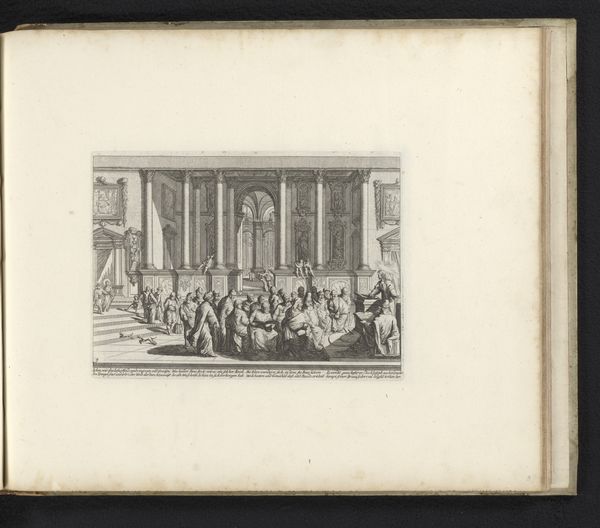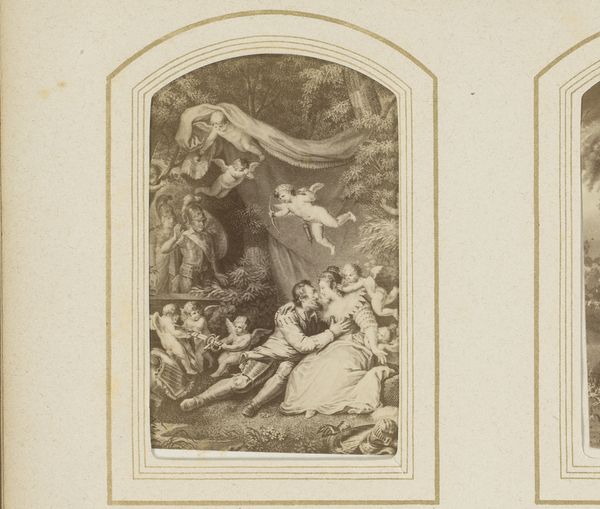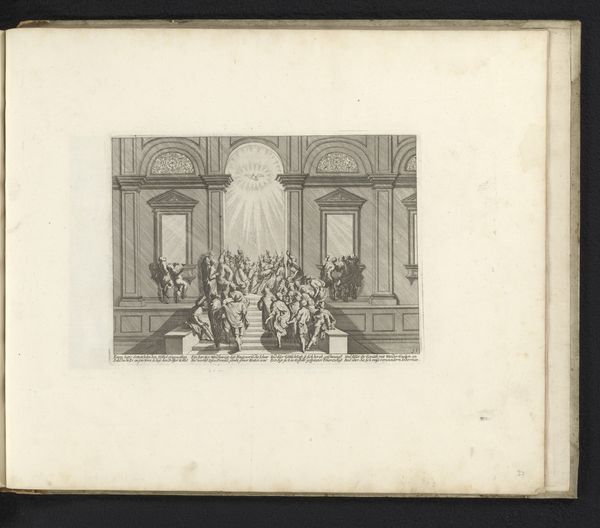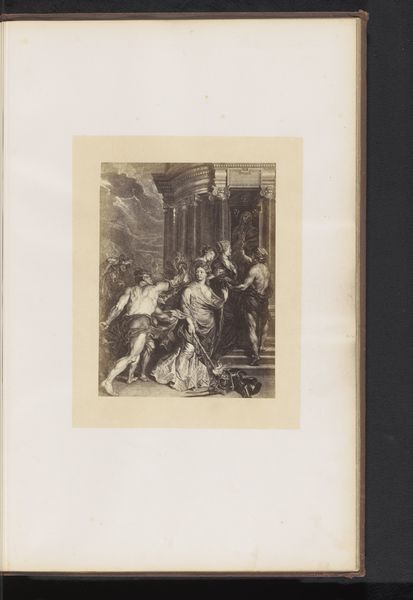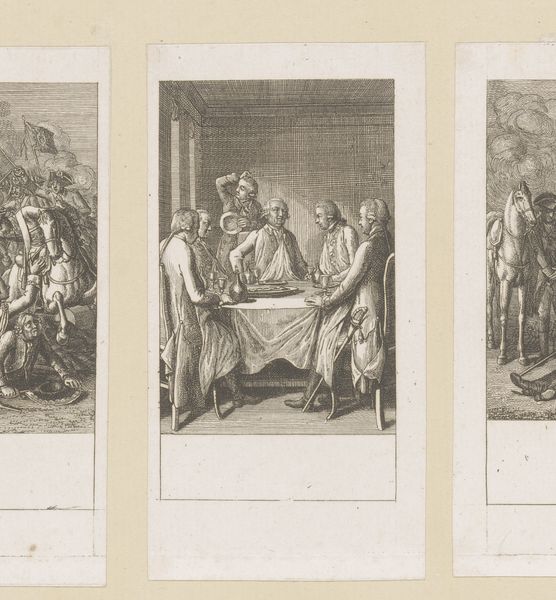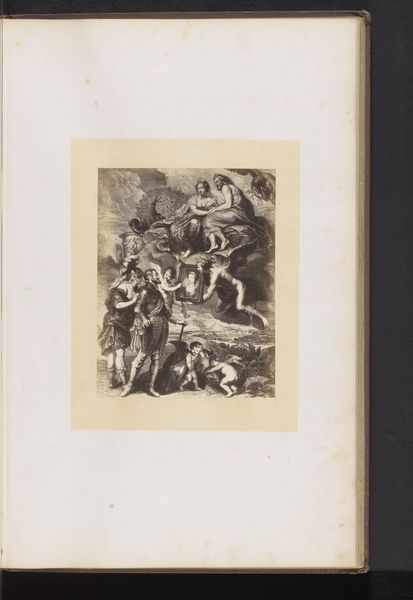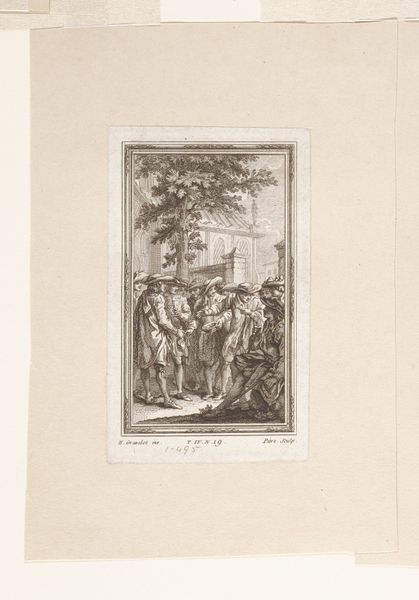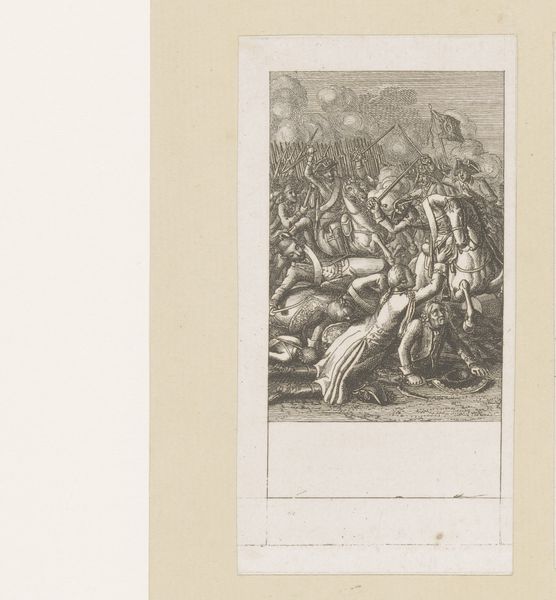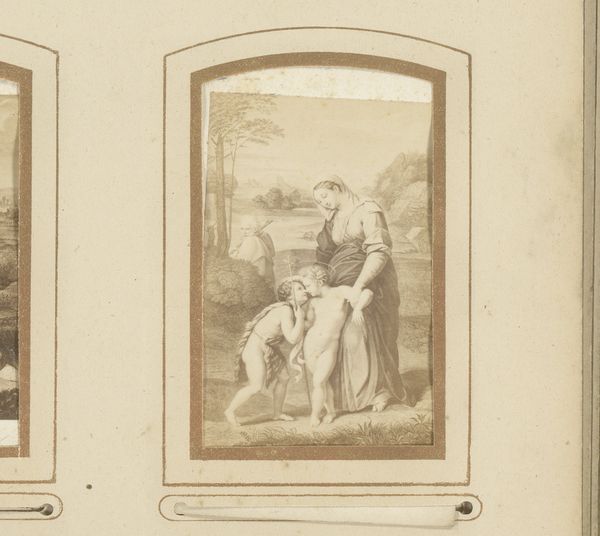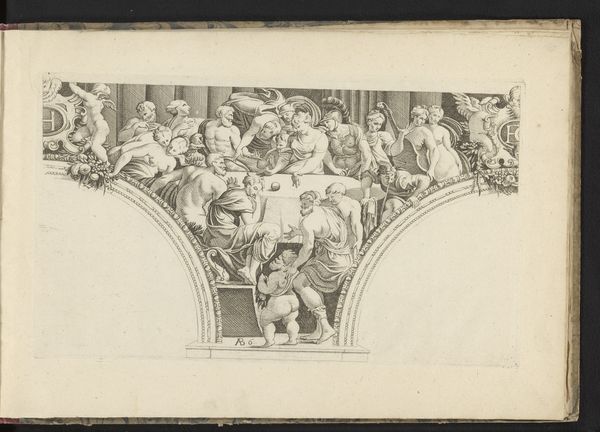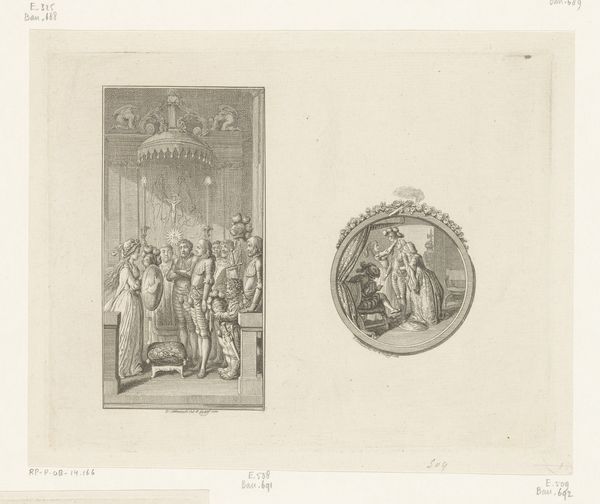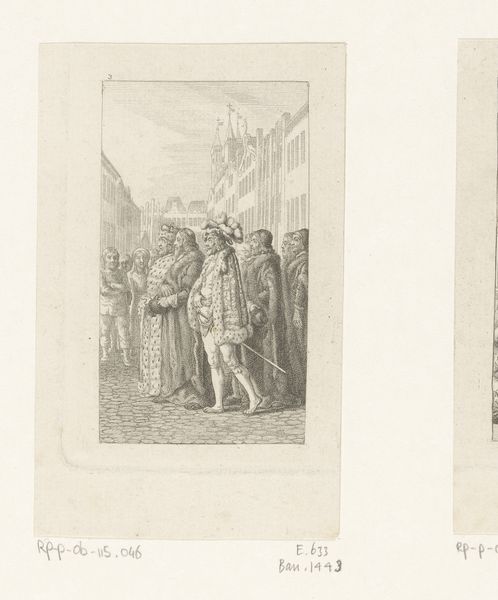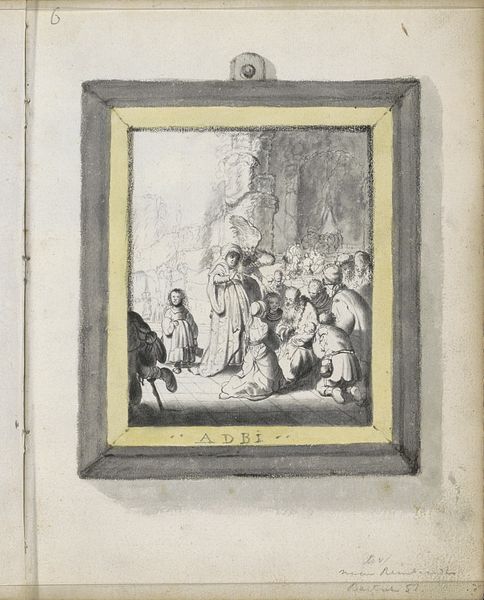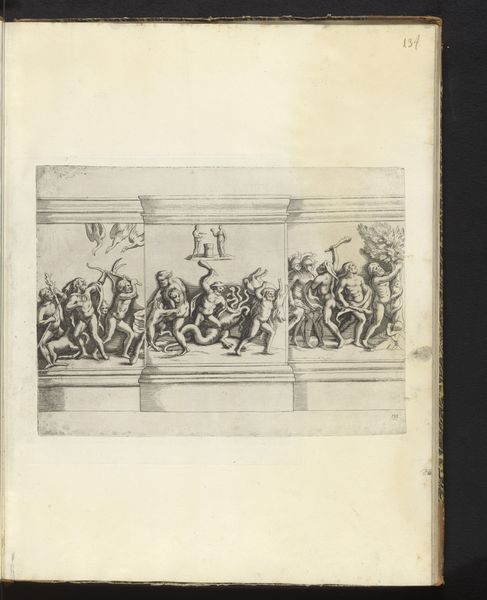
drawing, print, paper, ink, engraving
#
portrait
#
drawing
# print
#
sculpture
#
charcoal drawing
#
figuration
#
paper
#
charcoal art
#
ink
#
history-painting
#
academic-art
#
italian-renaissance
#
engraving
#
watercolor
#
realism
Dimensions: height 81 mm, width 50 mm
Copyright: Rijks Museum: Open Domain
Editor: This is a photomechanical reproduction of Raphael’s *Christ Carrying the Cross,* dating sometime between 1850 and 1900. I find the figures almost theatrical; their expressions seem to tell the whole story, and the overall tonal range feels subdued and a bit distant. What strikes you about this image? Curator: What immediately captures my attention is how a mid-19th-century photographic reproduction alters the accessibility and interpretation of a Renaissance masterpiece. Prior to photography, prints and engravings were the dominant means of disseminating images. How do you think the mass availability of this image would have affected viewers' understanding of Raphael and the concepts of religious suffering it conveys? Editor: I suppose it would bring it to the masses, so more people are aware and get a personal sense of art history that they may not be able to otherwise afford. Does the method change the original intent of Raphael? Curator: That is the key question! Consider that the social and political contexts have shifted dramatically from the early 16th century to the mid-19th. Religious imagery in Raphael's time served very different functions, acting as powerful instruments for spiritual contemplation and social cohesion. How do those original contexts interact with photographic realism? Do you see any social leveling happening? Editor: Interesting. Now I am starting to think about the audience in a new way. So instead of only the wealthy, more middle class, because they would now get to interpret Raphael in their own ways, through new contexts. Curator: Precisely! These reproductions democratize art, transforming religious devotion from a select aristocratic experience to something broadly consumed. It serves to illustrate the complex relationship between art, technology, and the changing socio-political landscapes that continuously redefine their significance. Editor: That’s a fascinating shift in perspective; thanks!
Comments
No comments
Be the first to comment and join the conversation on the ultimate creative platform.
